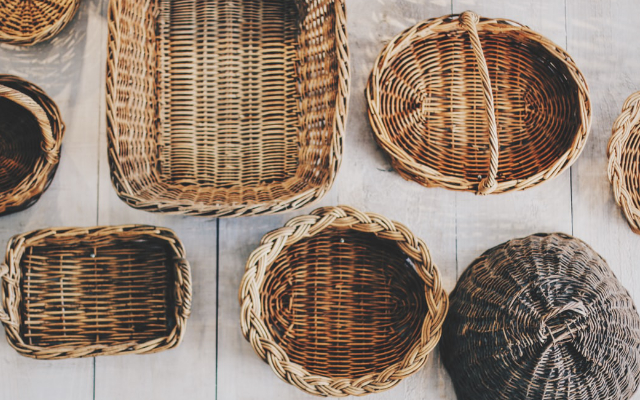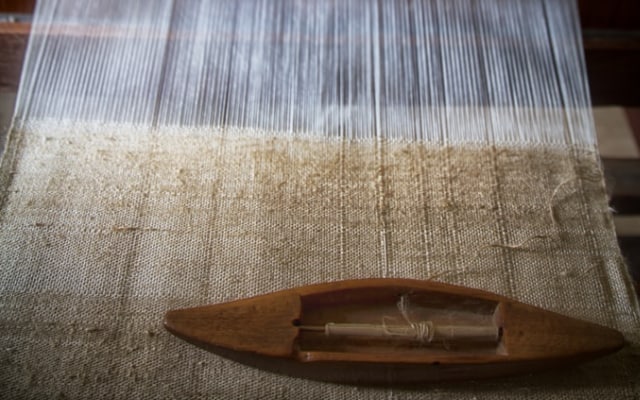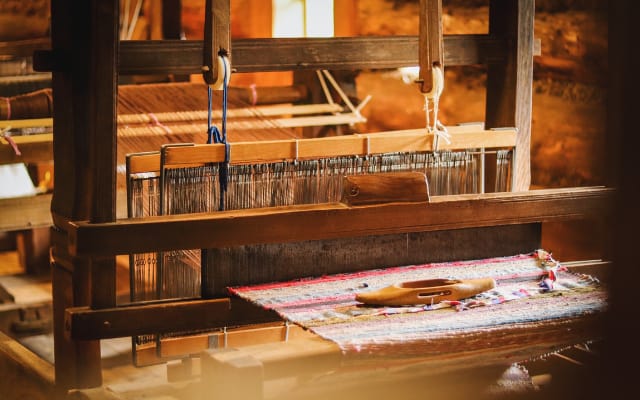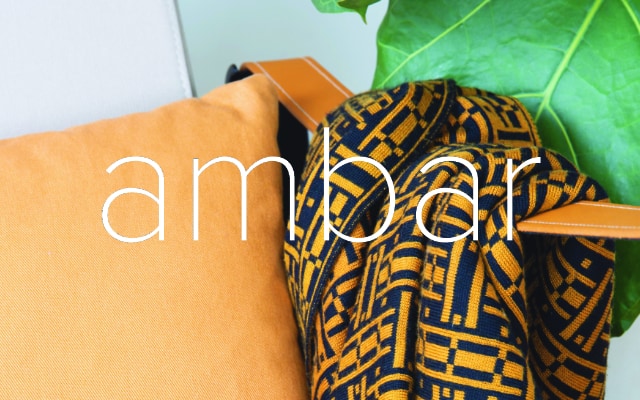The History of WEAVING
Threads of Story Through Time - Quite the Yarn

In the modern age, the idea of using your own hands to create something complicated or time consuming can be a turn off for many. With the ability to purchase almost anything you desire (finances allowing), it’s not surprising that the skills required to hand make things are being lost year by year. That in mind, there are a few skills that were instrumental in humanity's ability to grow from our cave dwelling ancestors to what we are today. While many would think of starting a fire, or making tools as essential skills, and they were, weaving was also vital to survival for early humans, and almost every era of humanity since.
Modern Weaving has several basic types of main structure for the weave, Plain Weave, Satin Weave and Twill Weave. A Plain weave is strong, durable and used in upholstery, printed fabric and canvas. It is the simplest and most common weave used today. The other styles are used for more advanced or specialised items, or when a different strength is required.
Early Threads of Human Time
Our Palaeolithic ancestors didn’t have synthetic fibres or machinery to ease production and had to rely on resources gathered from animals or plants to create clothing. Weaving also allowed them to create containers for transport and storage, doors to protect shelter and basic bedding and matting for some home comforts.
It may seem hard to picture your great, great… (repeat until you have gone back 27,000 years) grandparent would have been able to manufacture anything more complex than a roughly shaped stone or sharpened stick, but Archaeological evidence suggests that these ancient humans were manufacturing cordage in several types. These cords would have taken many hours to produce and would have been exceptionally valuable to the individual who created them. The artefacts found also include some scraps of burnt cloth and imprints of said cloth that show the surprising complexity of the work. Although basic by today's standards, the fabric is remarkably complex for its time and shows that humans have always been pioneers of creation and design.
One issue with these finds is we aren’t exactly sure how they were created as very little from the time has survived. It can be deduced that cordage was twisted from fibres, either plant based or harnessed from a kill. And that the more complex cloth was created using similar techniques to how a loom is used.
The loom as we know it is thought to have been invented in the 5th millennium BC so the fabric mentioned previously couldn’t have been created using one, but something that could be called a proto-loom may have been used. The general premise for a loom is to hold the warp threads (single threads that are longitudinal), while the weft thread or threads are ‘woven’ between them. This can be achieved rather simply using a tree branch and a counterweight to hold the warp at tension.
An experiment with a class of 7 year old school children demonstrated how the idea for the proto-loom may have come about. During a set of lessons about “Primitive Man” they were tasked to create mats for their ‘cave’. Using green rushes the children soon discovered the task was easier with 2 people as one could hold the warp rushes while the other threaded the weft thrushes between them. The children also began to “invent” several loom designs to aid in mat production.


Fabric of Life
When thinking of weaving the most common fabrics we think of are Cotton and Wool. Both of these are fairly easy to harvest and are renewable, Cotton being the harder of the two given its preference for tropical conditions. At one point even, there were more sheep in Britain than people, by a baaamy number of magnitude, and Cotton was one of the British Empire's chief businesses.
Wool has been a staple of textiles for milenia, being used for clothing, bedding, cloaks and coats. Given that Britain is famed for its amazing weather, balmy temperatures and lack of rain (if only that were the truth), it's not surprising woven woolen products have been so popular for clothing and other warm coverings. Wool provides good warmth and is fairly easy to work with, and the fact you can eat the sheep after it has served its usefulness wool wise is a delicious motivation for wool farmers. In fact, wool farming was at one point so successful in Britain that the individuals felt they had to give back to their communities, by building churches. This is why we see such large churches in small villages and towns.
Cotton by contrast isn't quite as thick, it can provide warmth to a degree but not as much. Depending on the way it is woven, the final fabric will have different properties. Growing cotton became an enormous industry, the demand growing to such a degree that it was at one point one of the highest exported goods in the world, but we won’t go into the cotton industry of the past. That’s a whole different can of worms.
Fabrics have had many significant purposes in history, religious and ceremonial garb, uniforms and even the colour of fabric would have been a class divider. Higher quality and harder to produce fabrics would have carried significant status, and rare colours in combination with this would have given an air of royalty or nobility. But simpler fabrics could still hold importance among peoples. Probably the most influential British woven fabric is Tweed. Tweed is woven in several styles and uses wool of varying colours to achieve the desired pattern. While traditionally used for upper class clothing such as jackets and waistcoats, tweed hats have also had prominence in the past.
Many other styles of weaving have become known in parts of Britain alongside Tweed however and have become almost synonymous with the certain areas. Tartan, for example, is associated with Scotland and the Kilts that are made from Tartan are the first thing that comes to mind when the fabric is mentioned. Tartan is made from multiple colours woven together at right angles to create a criss-crossed pattern with a variety of colours and variations of colour created by the weave. There is a myth regarding Tartan that suggests that the colour of the fabric carried meaning in years past. The main rumour is that red Tartan was used for battle, so the blood wouldn't show up, this is a modern falsehood however and has no evidence to support it.
Ease of Production
As with everything we humans have invented, the process of weaving has evolved over time due to new ideas and discoveries, as well as to get a more efficient way to produce things. Several things have always been essential for us, Food, Water and Shelter. But with textiles becoming more advanced through time, the fabrics we have been able to produce have made staying warm easier and easier.
Warmth has not always been the desired usage for textiles, as appearance has played a part too. Having high quality or difficult to acquire materials is now as it would have been in the past, a status symbol. Picture a caveman in a Burberry branded Mammoth fur coat. Weaving allowed a vast array of different patterns and designs to be created, with more complex examples obviously taking more time and effort than simple ones.
With the growth of civilizations over the world through time, business grew with it. Being able to have someone do something for you, which you repay with goods, services or tender of your own allowed some to focus on specific areas they were either skilled at or liked. With this commercial boom to every aspect of early civilization it’s no surprise that being able to maintain demand with supply is key. Having access to a secure means of production would have allowed individuals to keep themselves (and any family) while supplying to the masses.
Before the advent of machinery, everything was handmade but that didn’t mean it took huge effort, just time. The earliest looms would have allowed the user to produce more finely woven fabric with less degrees of error than using solely one’s hands, as well as faster and more efficiently. The investment in the work would have meant it was still highly valuable to the creator and anyone else who may have utilized it. But as time progressed and the ease of production grew, simple basic fabrics lost their value in the more advanced cultures.


Powered Up
The first powered loom was invented in 1785 by Edmund Cartwright, but the base design had been created earlier in 1745 by Jacques Vaucanson. Cartwright's loom was impractical by design but the premise behind it was further developed by numerous inventors in Manchester. By 1818, there were 32 factories containing 5,732 looms. As is common with new technology however, it was still cheaper to use hand looms for more complex designs and textiles, given the expense in materials if a fault developed in the fabric.
Within 200 years the loom had gone from exclusively hand powered, to basic powered to fully automatic and in the decades since, the looms of today would cause an existential crisis in anyone from the past who witnessed them.
But in the ongoing hunt for efficiency and automation, we are losing the skill of creating fabrics by hand or at least hand and machine together. The deep-rooted respect for the fabric has all but gone, replaced with brand adoration while we easily toss clothes and other woven goods aside when we don’t want them or they are of no further use. Our ancestors would be shocked at this, given the effort needed to create even a single basket, let alone shirt or trousers.
That respect for what has been created has been diminished as mass production overtook time and effort, but in recent years handmade is making a comeback and those obscure skills that have been clinging on for dear life have a second shot at proving that handmade is best.
Having something handcrafted brings joy in many ways, some are less obvious than others. Knowing someone poured their time and effort into creating something adds immense value to said product, as well as showing the love that one can have for their craft. Having something crafted also carries the sign of quality as humans aren't as quick or precise as a machine extra care must be taken, and if possible higher quality materials. It may cost a little more and it might not be as “trendy” as mass produced products, but buying something made with love is rewarding to both the crafter and the buyer and is sure to last. It can also be said that these items carry sentimental value, knowing it is not as disposable due to the investment in its creation makes us want to make it last. Patches, stitches and jury rigged repairs add extra character to a handmade item, while they make mass produced items look as disposable as they are.



